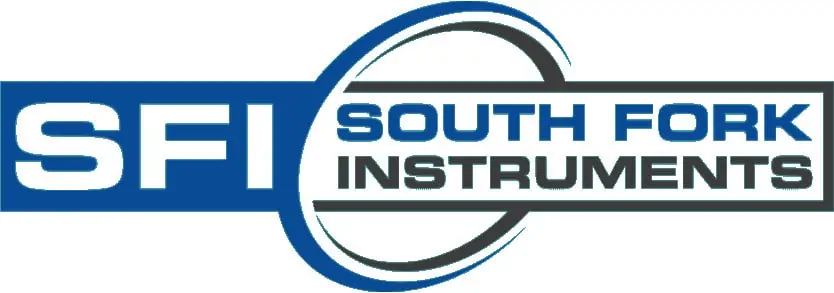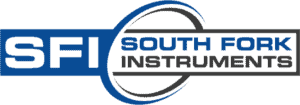Change can be a formidable force, especially when it comes to technological advancements. With the advent of cutting-edge radar level gauges, it’s easy to question the continued relevance of traditional technologies such as ultrasonic level transmitters.
The fact is, though, that ultrasonic level transmitters do still have a place in modern control systems. Here’s what to consider.
Comparing Radar Level Gauges and Ultrasonic Level Transmitters
In the realm of process control systems, choosing the appropriate measurement technology is integral to efficiency, accuracy, and overall operational success. Among the myriad of options available, radar level gauges and ultrasonic level transmitters require careful consideration.
Both technologies present a unique set of advantages, tailored to certain application scenarios. The two-part question then becomes — 1) What attributes do the specific application demand and 2) what solution makes the most sense from a cost perspective?
Let’s start by defining each:
What Is a Radar Level Gauge?
A radar level gauge, also known as a radar level sensor or radar level transmitter, is a type of device used to measure the level of a substance within a container, such as a tank or silo. It utilizes the principles of radar technology to determine the distance between the transmitter and the surface of the material.
What Is an Ultrasonic Level Transmitter?
An ultrasonic level transmitter is a type of measuring device that utilizes sound waves to determine the level or distance of a target surface, such as a liquid or solid, in a tank or other container. It works on the principle of ultrasonic wave propagation in a medium, specifically the time it takes for a sound wave to travel to the surface and back.
Radar Level Gauges: Precise and Adaptive
The process industry gravitates towards non-contact measurement methods, with radar level gauges emerging as a popular choice. These innovative devices offer numerous advantages: they’re accurate, non-contact, and independent of the process at hand. They are typically selected for their high precision and adaptability to a wide variety of process conditions, including severe temperature and pressure.
Radar level gauges come in a spectrum of quality levels and price points, from top-tier to less well-known brands. While they hold a certain allure, they are not necessary for every application.
Ultrasonic Level Transmitters: Highly Efficient
Take, for instance, the example of a straightforward, non-aggressive aqueous solution handling system where the presence of foam and vapors is minimal. Why use radar when the process doesn’t demand high accuracy or process independence?
Enter ultrasonic level transmitters, a seemingly underrated yet highly efficient solution. A robust and reliable choice for many industries, they are particularly well suited for applications where the medium being measured is relatively straightforward and uncomplicated.
Industries such as water treatment, bulk storage, and any situation involving clear, non-volatile liquids can greatly benefit from this technology.
In sum, they offer benefits, such as:
- Non-Contact Measurement: Like their radar counterparts, ultrasonic level transmitters operate on a non-contact principle. This makes them an appropriate match for applications involving substances that could be corrosive, sticky, or otherwise damaging to contact-based sensors.
- Cost-Effective: Ultrasonic level transmitters are typically much less expensive than radar systems. For processes that don’t demand extreme precision or that are performed in benign conditions, they offer a far more budget-friendly option.
- Simplicity and Ease of Use: Ultrasonic sensors are relatively simple to install and maintain. With no extensive training or calibration required, they are a good fit for applications where ease of operation and maintenance is a priority.
- Wide Measurement Range: The versatility of ultrasonic level transmitters is one of their great strengths. They are capable of measuring both liquid and solid levels accurately up to 30 to 40 feet, a feature that makes them a good fit for large tanks and open water alike.
- Resistance to Environmental Factors: Ultrasonic level transmitters perform well in environments with stable, non-fluctuating conditions. In applications such as water level measurement through ambient air—where there is little to no noise from foams or other factors—ultrasonic level transmitters offer clear reflection and solid performance.
Assessing the Cost-Benefit Ratio
From an economic perspective, ultrasonic transmitters are typically priced around a third of the cost of a radar system. When budget constraints weigh heavily on a project, ultrasonic transmitters present an attractive, cost-effective alternative that doesn’t compromise on functionality or results.
Maintenance and availability are other factors to consider. Devices with no moving parts, such as ultrasonic and radar level gauges, outrank those with mechanical elements.
While radar gauges might seem superior due to their non-contact nature, ultrasonic devices share this advantage. Their non-contact approach means less wear and tear, leading to lower maintenance requirements and greater device longevity.
Relevance in Modern Control Systems
Modern control systems are all about efficiency, accuracy, and cost-effectiveness. They are about employing the most suitable technology for the application. Radar level gauges, while advanced and accurate, may not always be the necessary or the most cost-effective choice, especially for straightforward, non-critical applications.
In these situations, ultrasonic level transmitters hold their ground. They are reliable, accurate, non-contact, and most importantly, budget-friendly. The relevance of ultrasonic level transmitters remains undisputed in modern control systems; they are particularly well-suited to applications where the operating conditions are benign and millimeter accuracy is not a critical requirement.
Final Word on New vs. Tried and True
Newer technologies come with many advantages but they shouldn’t blind us to the efficacy of tried-and-true methods. While radar level gauges have their place, ultrasonic level transmitters continue to be a viable and effective choice for many applications.
No matter the wave of change, there’s a reason some technologies persist. They are proven, they are reliable, and they deliver results. Ultrasonic level transmitters fall into this enduring category, ensuring they maintain a secure place in modern control systems.
Contact South Fork Instruments
Do you want to explore the potential of ultrasonic level transmitters for your applications? We invite you to take a look at the Hycontrol Ultrasonic Level Transmitters available at South Fork Instruments. Discover how this technology could meet your process needs. Contact us today to learn more by filling out this form or calling us at (925)461-5059.
Read More
pH Sensors in Aggressive Chemical Applications: Unlocking Better Performance and Longevity
Analog vs. Digital Memosens Probes: What’s Best for Process Analytics
How to Clean pH Electrodes for Maximum Life

